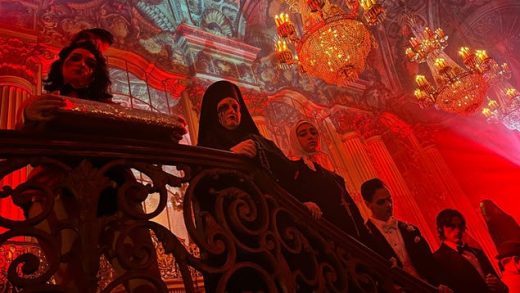With the highly anticipated sequel Black Panther: Wakanda Forever finally hitting theaters after what felt like the longest four years of my life, I didn’t have much faith that we would see another antagonist with a backstory and mission statement as arguable for redemption as much as Michael B. Jordan’s Erik Killmonger. Killmonger, the estranged cousin of T’Challa (Chadwick Boseman), was a literal child left behind in Oakland, California, after his father N’Jobu (Sterling K. Brown) was assassinated by King T’Chaka (N’Jobu’s older brother and T’Challa’s father, played by John Kani). Of course, this would’ve left Killmonger with an unruly hatred for his extended family. Were they too good to at least give the guy a little notice?
‘Black Panther’ has the best Marvel supervillain ever. Yes, even better than Loki.
“Hey, tough shoes to fill,” was my first thought when entering the theaters as I prepared to be immersed in the MCU’s complex world. But Wakanda Forever‘s villain Namor (Tenoch Huerta), who rules the underwater kingdom known as Talokan, won me and the audience over as easily as the fluttering of his ankle wings. A tribe estranged from the world — yup, even Wakanda — that also has access to vibranium introduces a refreshing counter-colonialist narrative of a group’s run from violent imperialism, much like that of Wakanda.

Credit: Photo courtesy of Marvel Studios.
Sympathizing with Namor’s request for Wakanda to keep his people and resources free from the grubby hands of colonizers felt very justified. Unfortunately, my adoration and hope for Namor and the people of Talokan started to dwindle as they planned to kidnap and murder the young genius Riri Williams (Dominique Thorne), not to mention causing the senseless drowning of Queen Ramonda (Angela Bassett).
Similarly, while it was completely understandable for Killmonger to return to Wakanda and demand that the country disperse its vibranium and other resources to underprivileged and exploited communities such as his own, his other actions (like burning the Heart-Shaped Herb, for starters) were just wrong. The dynamism of his villain arc made it extremely difficult to watch his demise; he had the plan, but he needed a better — perhaps anti-imperialist? — platform. Aside from these issues, Killmonger is one of the most compelling MCU villains ever written.
Without these irredeemable acts by Killmonger and Namor, Ryan Coogler probably would have had a bigger issue on his hands; audiences would have been tempted to throw their lots in with the hotter, badder guys than with the Black Panther and citizens of Wakanda. But even this speaks to his talent as a writer and director to make these larger-than-life superheroes and villains into complicated people we care about as deeply as family, beyond simple battles of good and evil.
Coogler’s thoughtful character construction prompts viewers to look into the institutions that seamlessly uphold societies in place. He writes characters with an understanding of systemic oppression and its functions in creating monsters rather than placing the blame on individuals for being “bad seeds.”
‘Black Panther: Wakanda Forever’s mid-credit scene explained: Was that in the comics?
The MCU is a universe for escapism, not a crash course on critical race theory and anti-imperialist propaganda. However, within the bounds of this universe that millions of fans gather to geek out over, Coogler creates narratives that elevate his films beyond typical multiplex fare. Any story where fans are debating whether or not the villains are actually villains is a story worth praising.
If Killmonger and Namor were ever to go at it in head-to-head combat, the ensuing fight would put Thanos’s snap to shame.
Black Panther: Wakanda Forever is now in theaters.











